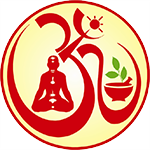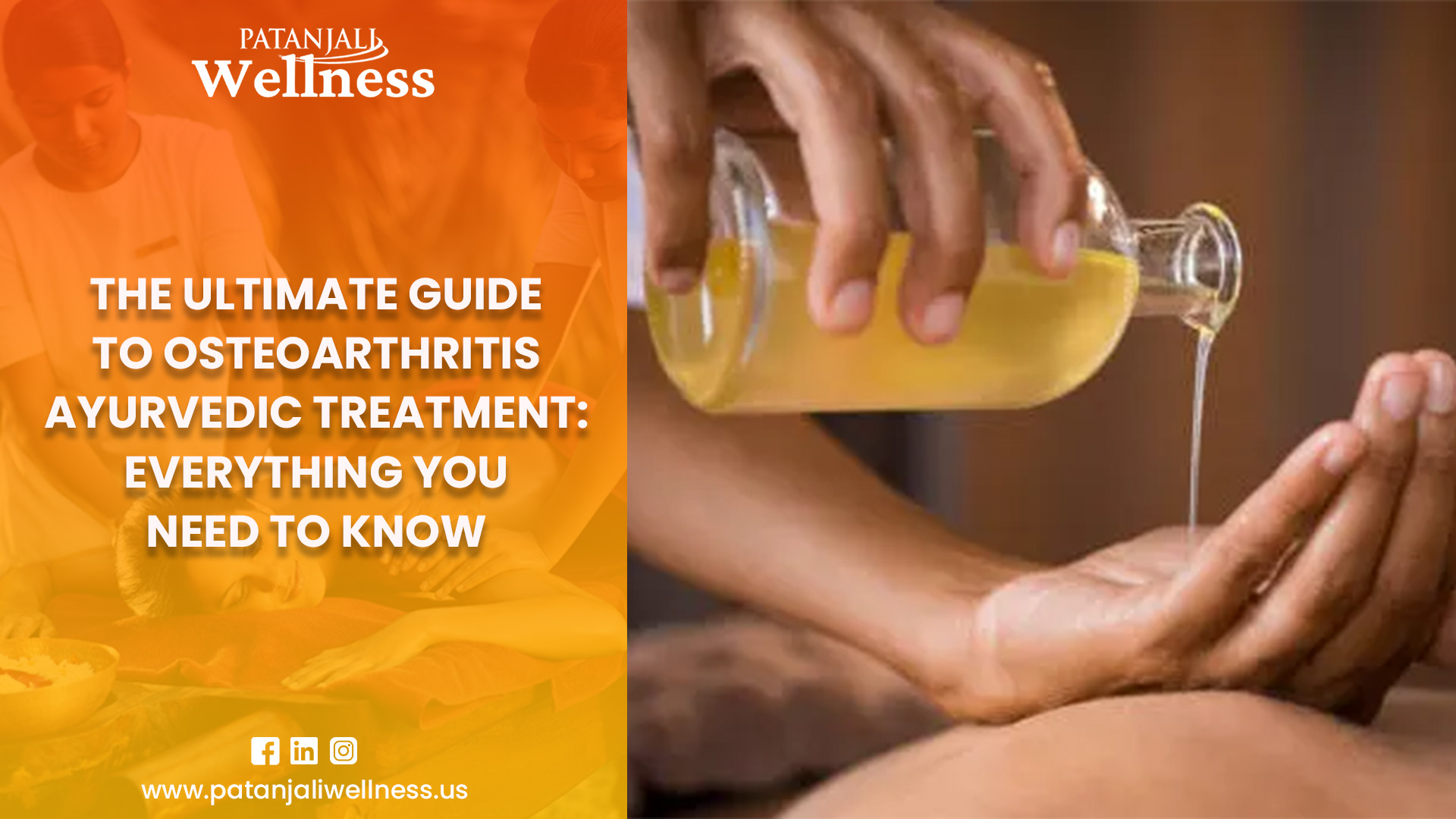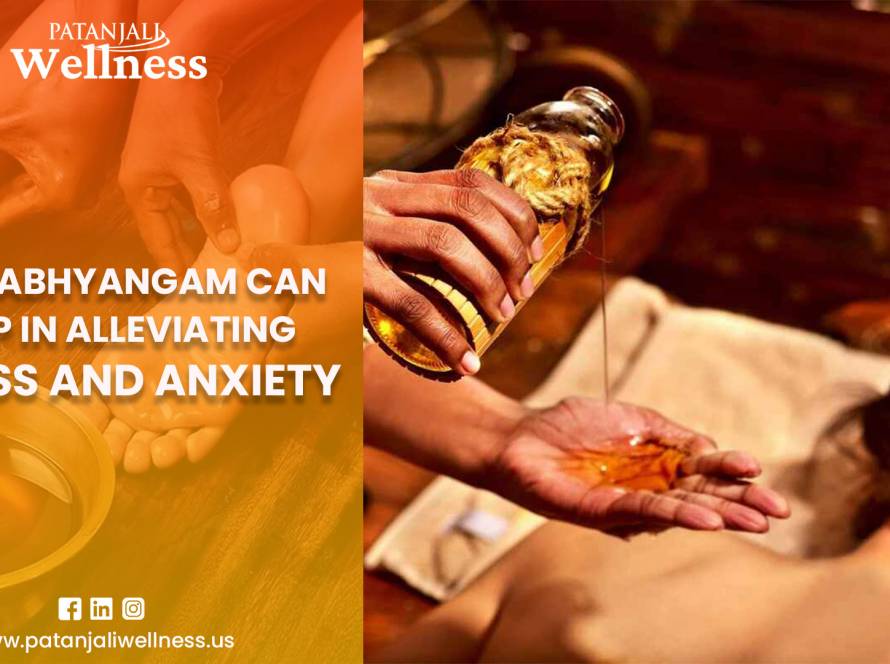Have you ever wondered how your bones function inside your body? What are those slippery and cushioned particles in between the bones that keep the joints strong? We can move our body freely because of our strong joints, which are under-appreciated.
Life without healthy joints is tough to imagine; our joints must be strong and healthy enough to keep our bodies moving.
Are you tired of living with the nagging pain and limitations of Osteoarthritis? Did you approach any medications to cure your pain, either Ayurvedic or Allopathic? If you are confused about which option would be the best or have concerns about Ayurvedic treatment, then you are at the right place.
In this comprehensive blog, we will dive deep into the realm of Ayurveda and explore its time-honored remedies and practices specially tailored to combat Osteoarthritis. From the ancient scriptures to modern research, we will gather pearls of wisdom to unveil the secrets of this traditional treatment approach.
Whether you are a newcomer to Ayurveda or have some familiarity with this powerful healing tradition, this guide will empower you with everything you need to know about using Ayurveda treatment for Osteoarthritis. We will delve into the fundamental principles, herbal remedies, dietary recommendations, lifestyle modifications, and even mind-body practices that can work harmoniously to ease pain and improve joint health.
What Causes Osteoarthritis?
There is no medically proven evidence behind the cause of Osteoarthritis. Many studies show that it is like a wear and tear factor. Some of the other factors that cause Osteoarthritis are as follows:
Age
Age is the primary factor causing Osteoarthritis; it starts from the late 40s onwards. With aging, the muscles and bones get weaker, overweight, and have less healing power which causes OA.
Gender
Female bones are considered to be weaker as compared to men. That’s why Osteoarthritis is seen mainly in females.
Obesity
Another reason that causes Osteoarthritis is obesity. When a person is overweight, the joints get all the pressure of the body, which becomes impossible to handle the body weight.
Joint Injury
Childhood joint injuries or other joint fractures might arise later with aging. Therefore, minor common injuries should be taken seriously to prevent severe osteoarthritis pain.
Genetic Factor
Some diseases get inherent in the genes, and Osteoarthritis is among them. People with an OA family background are likely to get developed.
Ayurvedic Treatment for Osteoarthritis
Ayurveda offers various natural remedies and therapies to manage Osteoarthritis. It balances the body’s doshas (Vata, Pitta, and Kapha) to promote overall health and alleviate specific conditions.
However, it’s essential to remember that Ayurvedic treatments should be used with conventional medical advice and not as a replacement. Here are some Ayurvedic approaches that may help manage Osteoarthritis:
Dietary Recommendations
An Ayurvedic diet for Osteoarthritis aims to reduce inflammation and balance the doshas. It usually involves consuming warm, cooked foods and avoiding cold, heavy, or processed foods. Foods rich in anti-inflammatory properties, such as ginger, turmeric, garlic, and green leafy vegetables, are commonly recommended.
Herbal Remedies
Several Ayurvedic herbs possess anti-inflammatory and analgesic properties that may help with osteoarthritis symptoms. Some commonly used herbs include Ashwagandha (Withania somnifera), Guggul (Commiphora mukul), Shallaki (Boswellia serrata), Turmeric (Curcuma longa), and Ginger (Zingiber officinale).
Ayurvedic Therapies
Ayurvedic therapies, such as Abhyanga (oil massage), Swedana (herbal steam therapy), and Panchakarma (detoxification treatments), may be beneficial in managing Osteoarthritis. These therapies remove toxins, reduce inflammation, and improve joint mobility. Visit Here for Ayurvedic Therapy in Houston.
Lifestyle Modifications
Ayurveda emphasizes a balanced lifestyle to maintain overall health. Regular exercise, yoga, and pranayama (breathing exercises) are often recommended to improve joint flexibility and reduce stress.
Ayurvedic Formulations
Ayurvedic practitioners may prescribe specific formulations, such as Chyawanprash and Triphala, which can help support the immune system and improve overall well-being.
Yoga and Meditation
Ayurveda recommends practicing yoga to cure pain, reduce stress, promote joint mobility, and meditation can lead to peace of mind, body, and soul.
Ayurvedic Herbal Treatments for Managing Osteoarthritis
Ayurvedic herbal treatments for managing Osteoarthritis focus on reducing inflammation, relieving pain, improving joint function, and supporting overall joint health. Here are some commonly used Ayurvedic herbs and formulations for Osteoarthritis:
Shallaki (Boswellia serrata)
Shallaki, also known as Indian frankincense, is a potent anti-inflammatory herb. It helps reduce joint inflammation and pain, making it beneficial for managing osteoarthritis symptoms.
Guggul (Commiphora mukul)
Guggul is another anti-inflammatory herb commonly used in Ayurveda. It can alleviate joint pain and support joint flexibility in Osteoarthritis.
Ashwagandha (Withania somnifera)
Ashwagandha is an adaptogenic herb that may help reduce stress and inflammation associated with Osteoarthritis. It can also support joint health.
Turmeric (Curcuma longa)
Curcumin, the active compound in turmeric, has potent anti-inflammatory and antioxidant properties. It can be beneficial in managing Osteoarthritis by reducing pain and inflammation in the joints.
Ginger (Zingiber officinale)
Ginger is another herb with anti-inflammatory properties that can help ease joint pain and improve joint function in Osteoarthritis.
Triphala
Triphala is a combination of three fruits (Amalaki, Bibhitaki, and Haritaki). It aids digestion, supports detoxification, and may indirectly improve joint health by promoting overall wellness.
Nirgundi (Vitex negundo)
Nirgundi is known for its analgesic and anti-inflammatory properties. It can help reduce joint pain and inflammation in Osteoarthritis.
Panchakarma
Panchakarma treatment is an Ayurvedic detoxification and cleansing therapy that may be beneficial in some cases of Osteoarthritis. It helps eliminate accumulated toxins from the body and supports joint health.
Ayurvedic Joint Oils
There are various Ayurvedic oils available for external application to the affected joints. These oils are often infused with herbs like Shallaki, Guggul, and ginger, among others, to relieve pain and improve joint mobility.
Ayurvedic Therapies for Managing Osteoarthritis Symptoms
Ayurvedic therapies can be beneficial in managing osteoarthritis symptoms by reducing pain and inflammation and improving joint function. These therapies balance the doshas, promote detoxification, and support the body’s natural healing mechanisms. Here are some Ayurvedic treatments commonly used for managing Osteoarthritis:
Abhyanga (Ayurvedic Oil Massage)
Abhyanga involves a full-body massage using warm herbal oils. It helps reduce joint pain and stiffness by improving blood circulation and nourishing the tissues. Specific attention can be given to the affected joints to alleviate localized symptoms.
Swedana (Herbal Steam Therapy)
Swedana involves steam therapy using herbal decoctions or oils. The warm steam helps to loosen toxins, reduce inflammation, and relieve joint pain and stiffness.
Janu Basti (Knee Oil Pooling)
Janu Basti is a specialized treatment for knee-related issues like Osteoarthritis. A dough dam is placed around the knee joint, and warm herbal oil is poured into the pool. This helps to reduce pain and inflammation and improve joint flexibility.
Patra Pinda Sweda (Herbal Bolus Massage)
Patra Pinda Sweda massages the body with boluses filled with herbal leaves and powders. The herbal bolus is dipped in warm oil and then used to massage the affected joints, relieving pain and stiffness.
Panchakarma
Panchakarma treatment is a comprehensive detoxification and rejuvenation therapy in Ayurveda. It involves a series of treatments, including Virechana (purgation) and Basti (medicated enema), to eliminate toxins from the body and balance the doshas. Panchakarma can be beneficial in managing chronic conditions like Osteoarthritis.
Lepa (Herbal Paste Application)
Lepa involves applying herbal pastes or poultices to the affected joints. These herbal pastes have anti-inflammatory properties and can help reduce pain and inflammation.
Yoga and Exercise
Ayurveda emphasizes the importance of gentle exercise and yoga for managing Osteoarthritis. Yoga postures (asanas) and stretches can improve joint flexibility, reduce stiffness, and strengthen the muscles supporting the affected joints.
Lifestyle Recommendations
Ayurvedic lifestyle recommendations focus on maintaining a balanced routine, avoiding overexertion, and getting adequate rest and sleep to support healing.
Yoga and Exercises Recommended for Osteoarthritis Patients
Yoga and gentle exercises can benefit individuals with Osteoarthritis, as they help improve joint flexibility, reduce pain, and strengthen the muscles around the affected joints. However, choosing activities suitable for your specific condition and level of mobility is essential. Here are some yoga and practices recommended for osteoarthritis patients:
Range-of-Motion Exercises
These exercises help maintain and improve joint flexibility. Gentle movements through the full range of motion in the affected joints can reduce stiffness and increase mobility. Examples include wrist circles, ankle circles, and neck rotations.
Stretching Exercises
Gentle stretching can help alleviate muscle tension and improve joint flexibility. Focus on stretches targeting the affected joints and surrounding muscles, such as hamstring, quadriceps, and shoulder stretches.
Low-Impact Aerobic Exercises
Low-impact aerobic exercises help maintain cardiovascular health without putting excessive stress on the joints. Walking, swimming, and cycling are good options for osteoarthritis patients.
Yoga
Yoga is an excellent practice for individuals with Osteoarthritis as it combines gentle stretching, strengthening, and relaxation. Some yoga poses that may be beneficial include:
- Child’s Pose (Balasana): A soft stretch for the lower back and hips.
- Cat-Cow Pose (Marjaryasana-Bitilasana): Helps improve spinal flexibility.
- Mountain Pose (Tadasana): Promotes balance and alignment.
- Warrior Poses (Virabhadrasana I, II, and III): Strengthen the legs and improve balance.
- Triangle Pose (Trikonasana): Stretches and strengthens the hips and legs.
- Bridge Pose (Setu Bandhasana): Strengthens the back and glutes.
Tai Chi
Tai Chi is a low-impact, slow-motion exercise that can improve balance, flexibility, and muscle strength, making it beneficial for osteoarthritis patients.
Water Exercises
Water-based exercises, such as water aerobics or swimming, provide a supportive and low-impact environment for joints while helping to improve overall strength and flexibility.
Take Away
Ayurveda offers a promising alternative to cure Osteoarthritis symptoms; it balances the body’s energy with herbal remedies, practicing yoga and meditation. From dietary to lifestyle recommendations, we have covered all these topics in this blog to prevent joint pain.
Before implementing home remedies or Ayurvedic treatment, consult a qualified practitioner or healthcare professional. Visit Patanjali Wellness Center in Houston to consult Ayurvedic professionals to cure Osteoarthritis.
Each body’s condition is unique; therefore personalized Ayurvedic treatment approach would result in better. You can use Ayurvedic treatment procedures or combine them with conventional medical advice. Making such proactive decisions fills your life with greater mobility and vitality. With patience and dedication, your path to holistic healing begins, and may it lead to a life of reduced pain, enhanced joint function, and a renewed sense of balance and harmony.





